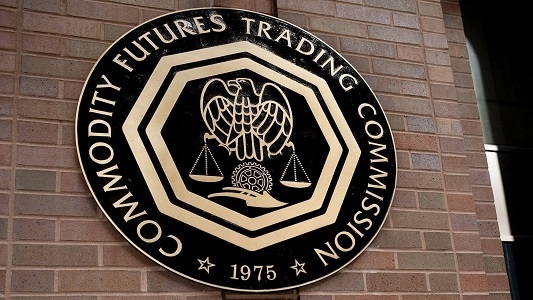Early blockchain projects begin to show progress

As distributed ledger technology matures, interest has turned from the general to the specific. Conversations have moved on from asking what blockchain-based technologies merely are to the specific benefits for their individual usage case and how it can be practically implemented.
Blockchain consortiums looking to inject node-based ledger efficiency into the financial system are becoming ever more common. Groups such as the R3 consortium, involving 45 financial companies, are gaining members constantly as the market begins to take notice of the potential offered by a distributed ledger.
Less financially-focused projects have also gained traction over the last year, with HyperLedger, a cross-industry initiative designed to provide a standardised and modular distributed ledger framework to ensure easy interoperability between various industries, swelling to more than 60 members.
However, the timeline for the launch of products is not short and many remain pre-proof of concept. Areas of significant throughput and those that require standardisation between participants, such as clearing and settlement, will see longer development cycles as they require intense cooperation in the design phase and so are better served through consortiums. Conversely, faster maturity cycles will be the norm in use cases that are entirely in-house or exist between limited numbers of participants.
Processes such as financial invoicing and know-your-customer (KYC) records are more likely to see rapid adoption as they do not require widespread use in order to function. These technologies are already being researched and developed by numerous entities, and provide the most concrete details on possible implementation.
Post-trade
While blockchain technology has the potential to dramatically alter posttrade services, “for this to happen, the technology has to be re-imagined and redesigned from the ground up so that its attributes are specifically matched to the particular needs of the post-trade sector,” says Thorsten Peisl, CEO of RISE Financial Technologies.
Blockchain implementation is not as simple as ripping the core out of the Bitcoin system and cramming it into a fundamentally different use case. Bitcoin, which represents the most obvious and widely-tested distributed ledger architecture, includes a publically accessible transaction record that would be unsuitable for use by financial entities.
Companies that are working on distributed ledger systems must find and fill these holes in Bitcoin’s blueprint, while also adapting the technology to better suit its particular markets.
RISE, working on distributed ledger technology for post-trade settlement and securities safekeeping, has already had to overcome some of these challenges in the development of its products. While its blockchain-based system retains the immutable ledger format which provides a permanent audit trail, it does so based on a permissioned solution, offering a public record of which asset has been moved and between which counterparties but withholding further information from users without a private key.
In a split access system, asset owners can gain access to the details of how their assets are traded and by whom, while brokers are able to access to data from just their clients. This permissioned system simultaneously allows full accountability with an incontrovertible audit trail, alongside the privacy required by financial institutions.
In the Bitcoin environment, data verification is handled by private Bitcoin miners that verify the contents of each block for a monetary, which increases the money supply. In a system that is not permissioned, these incentives are necessary to encourage verification, while barriers to entry such as the cryptographic puzzles used in Bitcoin are necessary to disincentivise false verifications.
RISE relies instead on approved and regulated market participants such as CSDs, CCPs and custodians to enter data correctly, with an indisputable data trail guarding against falsified entries. Because these entities are already regulated and trusted by the community, a less resource-intensive but still consensus-based verification system can be used.
On the other hand, Blockchain implementation in the post-trade space benefits from the already fairly standardised formats used; negating many of the issues involved in other markets where the widespread use of legacy system complicates the automatic entry of data. RISE has found that as long as it offers SWIFT compatibility, and a robust application programming interface (API) allowing users to integrate the technology into their data terminals, integration with individual systems is less of an issue.
In the system it is currently testing RISE settles no transactions (all settlement occurs off ledger), which frees the company from the responsibility and cost such a capability would bring. Instead, trading venues still deal with submitting the transaction details and the system sends the resulting data out to its network of regulated entities for verification and approval. Once the settlement instruction is verified it is added to the next update as ‘settled’.
In a de-central settlement solution the transaction validation process can offer numerous benefits according to Peisl. First, it can help to enforce compliance with certain regulations, check availability and eligibility of assets, or whether trading counterparts are qualified entities for the respective transaction.
Secondly, utilising a consensus mechanism, the nodal consensusbased architecture can guarantee that two simultaneous orders for the same securities are resolved without both being approved, ensuring that only a single competing transaction is recorded.
Thirdly, this system layout could offer regulators the option to view all recorded trade data, and the possibility of encoding regulatory rules in the validation process, guaranteeing compliance.
Clearing & settlement
The Australian Securities Exchange has been vocal about looking to blockchain for a replacement for its clearing and settlement system CHESS. In its recent 2016 results presentation, the company announced that it has completed the initial phase of a working distributed ledger solution for a subset of use cases, and` that work on the next phase had already begun.
The joint project between ASX and Digital Asset Holdings mirrors RISE’s effort in several ways, with the same concerns over permissions and restrictions, but differs by actually replacing the settlement system entirely with a blockchain-based solution. This wholesale change necessitates more work, but allows greater automation and potentially lower costs in the long run.
Regarding the importance of security and creating a permissioned network, ASX deputy CEO Peter Hiom said at the exchange’s 2016 results presentation: “Public blockchains are operated largely in unregulated marketplaces where anyone can join and access those markets anonymously via a public, or unpermissioned, network. Network security is public to scrutiny and if compromised it could allow someone to anonymously and unilaterally transfer cryptocurrency on the public network. This is clearly unacceptable in the types of highly regulated markets within which the ASX operates.”
Despite positive steps and recent developments, the road ahead is still long. While RISE has a well-constructed model, it has not yet moved on to a pilot scheme, and is still far removed from broad adoption. Meanwhile, the ASX CHESS replacement project has scant little to offer in terms of detail.
In fact, according to an August 2016 report by Celent, a financial IT research and consulting firm, the only large financial services area to have seen a blockchain-based project even enter the pilot stage is in cross-border payments. Ripple Consensus Ledger, developed by Ripple Labs, is of particular note, with more than 30 pilot schemes completed and an imminent production stage planned.
While progress towards market rollout has been slow, Celent warns against presuming the pace will remain sluggish. A recent successful proof of concept test for a distributed peer-to-peer network covering single-name credit default swaps gives hope that the speed of change will increase. The test, run by a working group that included four banks, the DTCC and Markit “represents a very important milestone in the development of distributed ledger technology in the capital markets,” according to Celent.
The test demonstrated the use of smart contracts within a highly complex market environment, validating their use and providing a roadmap for further development across the financial markets. These contracts, which allow users to program automatic actions based on data inputs and criteria – the ability to automatically distribute dividends for example – are integral to making distributed ledger technology fit for purpose. A proof of concept for such an important part of the blockchain environment “does indicate a high level of throughput and scalability, indicating that the pace to maturity of distributed ledger technology in the capital markets could surprise people.”
Found this useful?
Take a complimentary trial of the FOW Marketing Intelligence Platform – the comprehensive source of news and analysis across the buy- and sell- side.
Gain access to:
- A single source of in-depth news, insight and analysis across Asset Management, Securities Finance, Custody, Fund Services and Derivatives
- Our interactive database, optimized to enable you to summarise data and build graphs outlining market activity
- Exclusive whitepapers, supplements and industry analysis curated and published by Futures & Options World
- Breaking news, daily and weekly alerts on the markets most relevant to you




